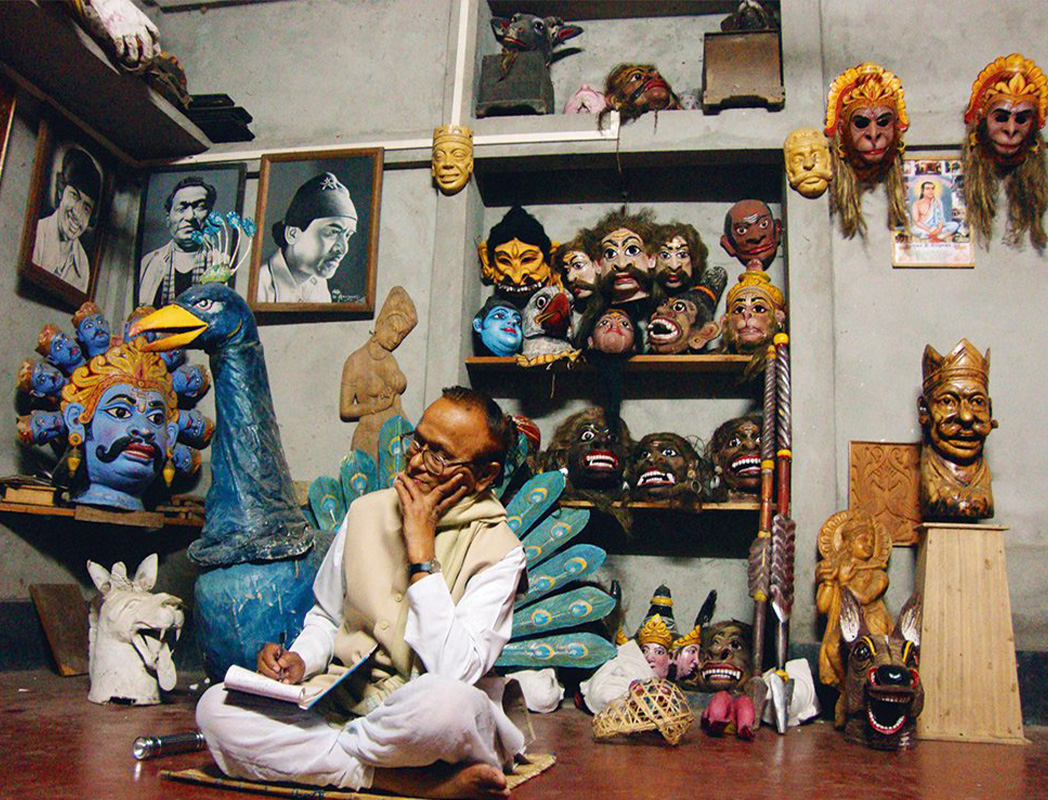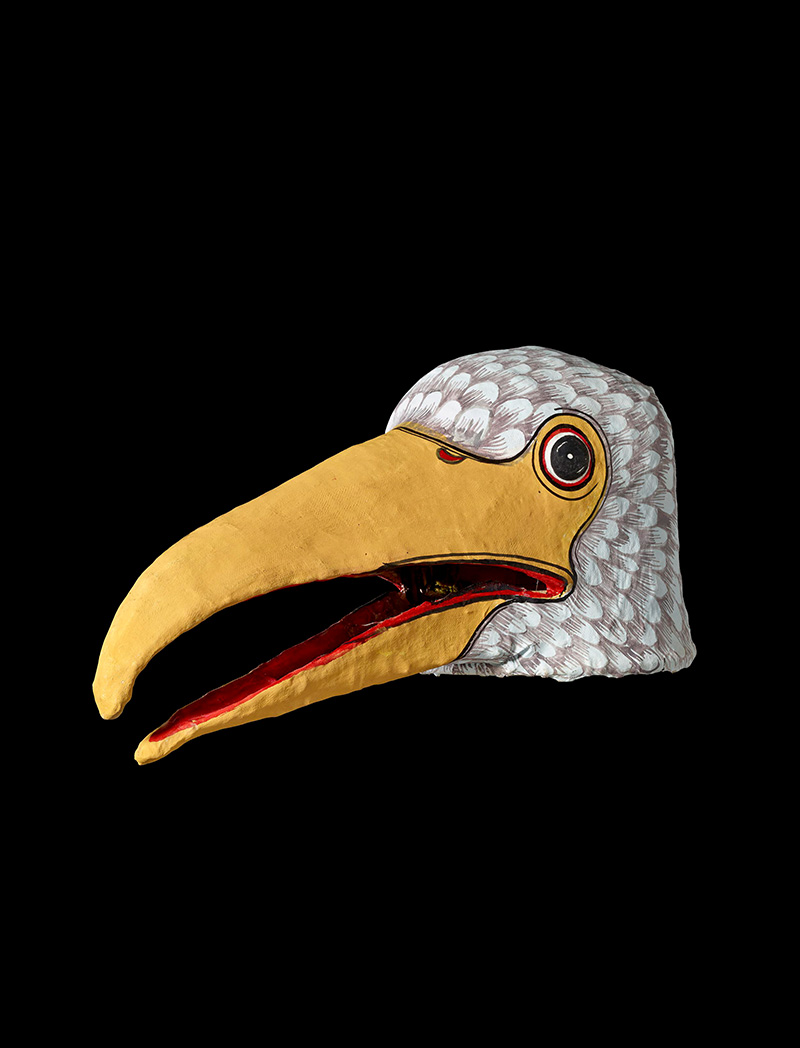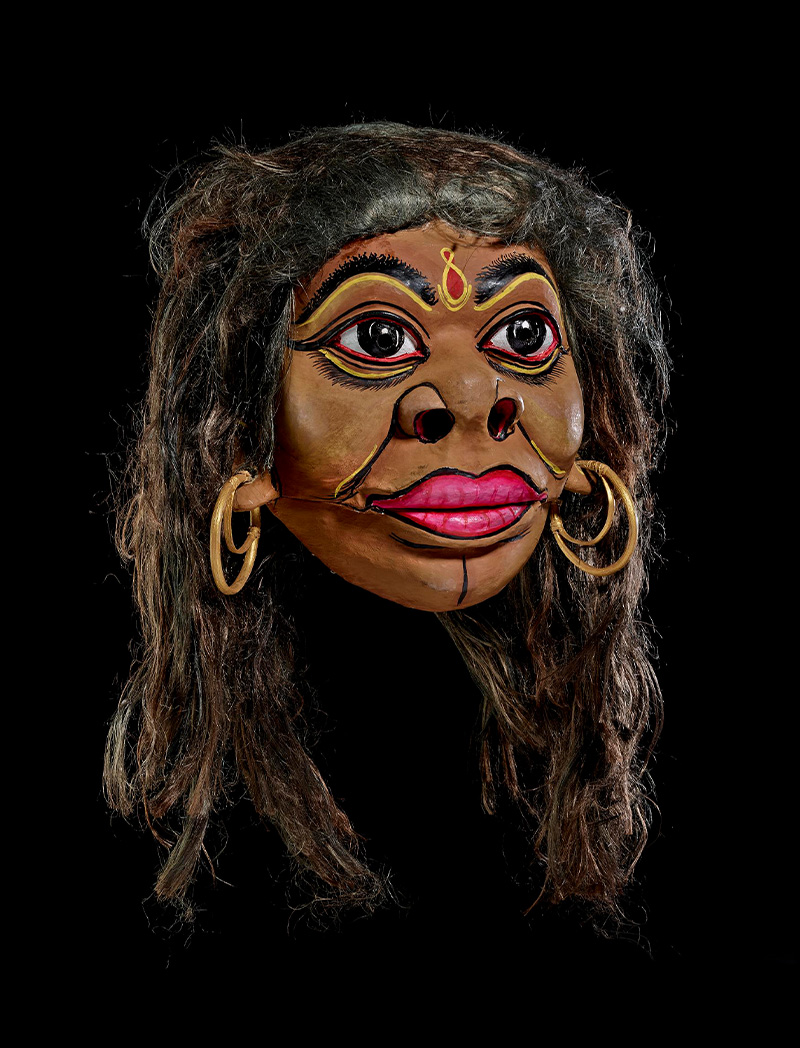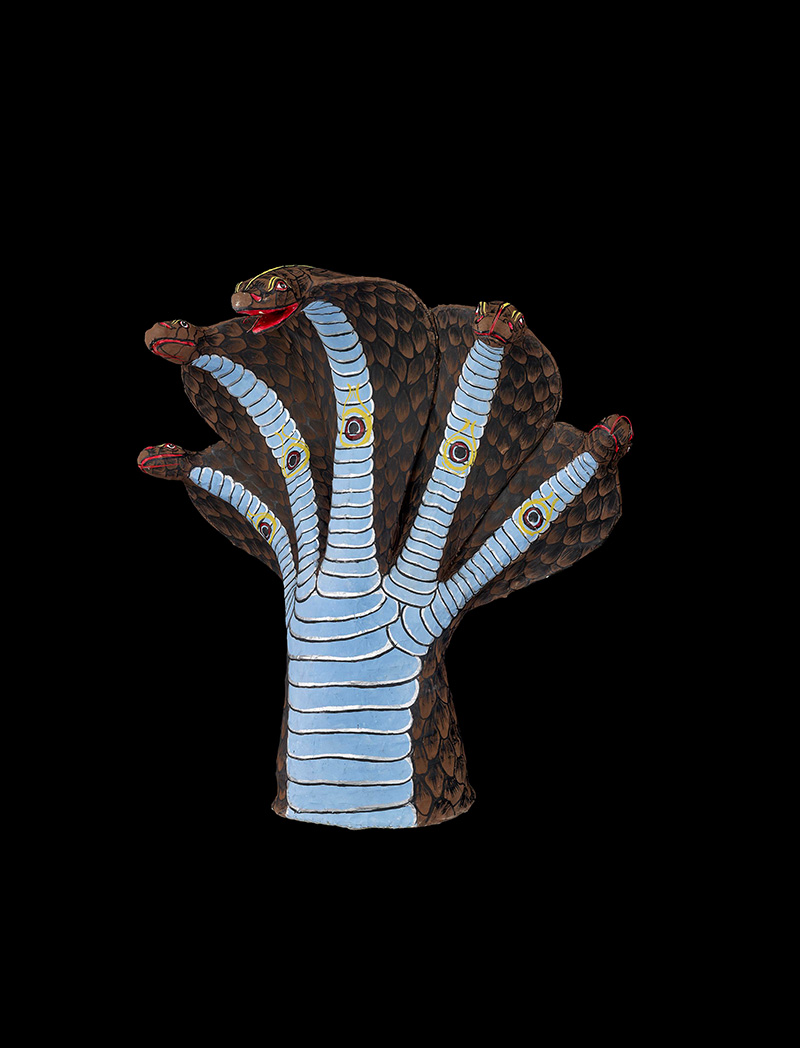PERSPECTIVES
From Monasteries to Community Theatre
A mask-making tradition dating back nearly five hundred years thrives in the sattras (monasteries) of Majuli, a large island in the Brahmaputra river that flows through Assam. The sattras were centres of neo-Vaishnavite worship and established by Srimanta Sankardeva in the fifteenth century.
Historically, these masks were worn during bhaona, a form of folk theatre initiated by Shankardeva to bring stories from the Mahabharata, Ramayana and Bhagavat Purana to wider audiences. These performances were staged in naamghars (community prayer halls) with the masks helping to dramatise the performances and animate the characters within them. Two categories of masked figures, in particular, have been predominant: loukik (worldly figures), including humans and animals, and aloukik (supernatural figures), encompassing various fantastical figures such as demons, demigods and zoomorphs.
Masks are also made in three sizes — the mukha (covering just the face), the lutukai (covering the chest) and su-mukha (a two-part mask that covers both the head and body).
Among the numerous sattras in Majuli, the Notun Samaguri sattra is renowned for its masks and is a major hub for its production. Its head, Hemchandra Goswami, is also a master mask-maker. This process first involves crafting the frames out of bamboo and then contouring the final shapes using cloth, clay and cow dung. The surface of finished masks are then smoothed using a bamboo file and the details are painted using various vegetable dyes.
These handcrafted masks continue to be made across Assam today and are still used in bhaona and raas lila performances. Believed to be holy, they are worshipped before a performance and stored in the naamghars when not in use.








